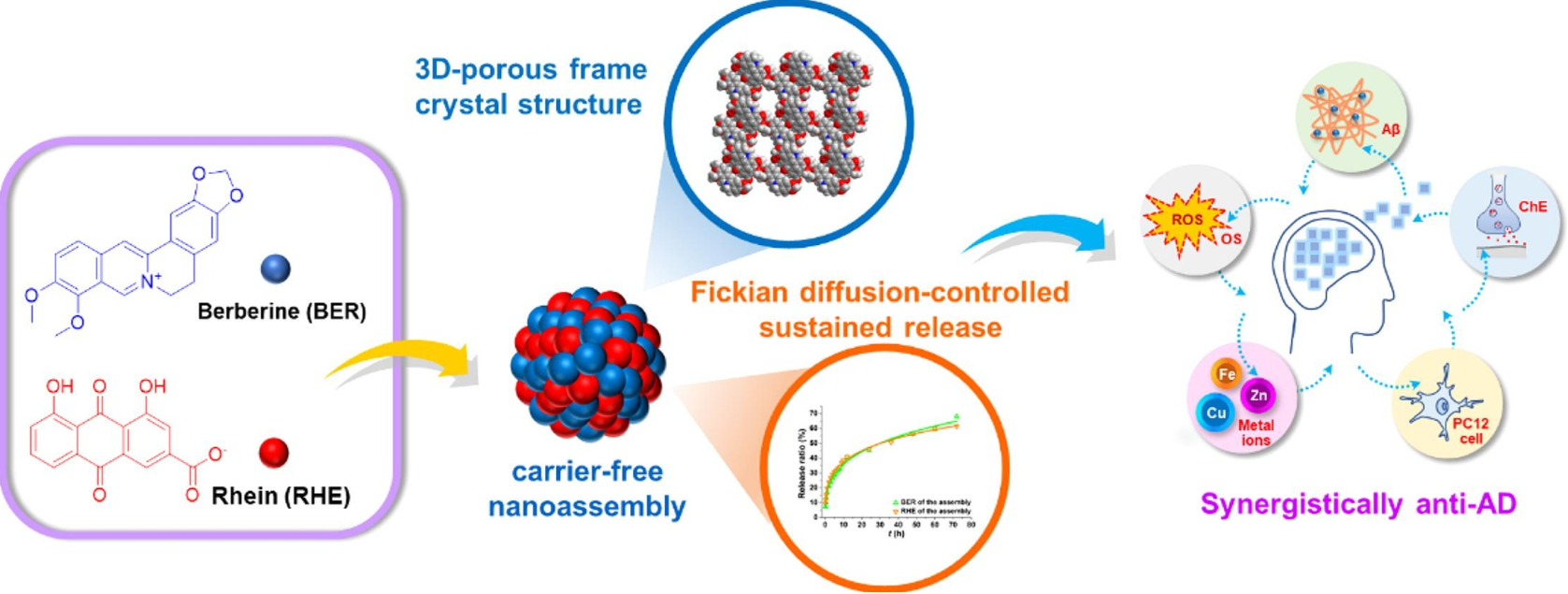Herbal medicine with a small-molecule anti-AD agent

Carrier-free Chinese herbal small molecules self-assembly with 3D-porous crystal framework as a synergistic anti-AD agent
AD is a devastating neurodegenerative disease caused by a variety of factors. Single-target drugs have shown limited efficacy in treating AD. Thus, multi-target intervention strategies have great potential. Traditional Chinese medicine is mostly used in the form of compound and has multiple pharmaceutical behavior. Coptis coptis and rhubarb are commonly used in the treatment of AD. In this study, the new carrier-free nanoassemblies with a 3D porous frame crystal structure were prepared from supramolecular self-assembly of berberine (BER) and rhein (RHE), the main active components of Coptis and rhubarb. Combining the spectroscopic data and the single crystal structure, it is clarified that the self-assembly process is dominated by electrostatic interactions and π - π stacking. In vitro release properties, cholinesterase (ChE) inhibition, β -amyloid (A β) aggregation regulation, free radical elimination, metal ion chelation, and cytotoxicity assays showed that the obtained BER-RHE components have Fickian diffusion-controlled sustained-release capacity, and almost no neurotoxicity. In addition, the in vivo assessment of reactive oxygen species (ROS) levels suggests that this assembly can reduce the intracellular ROS accumulation in Caenorhabditis elegans (C. elegans). At the same time, the BER-RHE components can also be used as novel potential drug delivery carriers due to their excellent 3D porous framework. This green simplicity strategy of constructing carrier-free nanoassembly microstructures by supramolecular self-assembly may provide inspiration for the development of multi-target therapeutics in AD and the design of novel drug delivery systems.
18915694570
Previous: BK Engineering Bacteri
Next: Revascularization-β-HS


